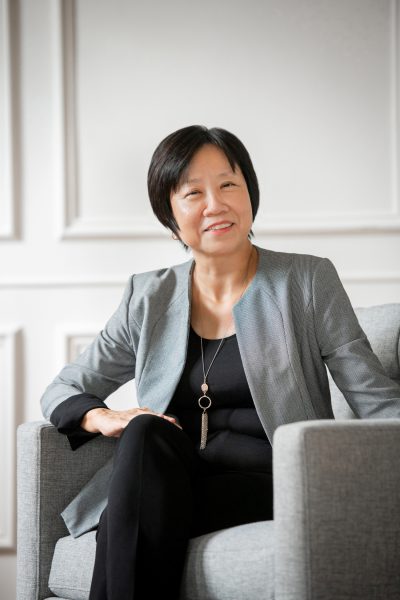The following interview with our CEO Ong Geok Chwee was first published in Marketing Magazine on 11 February 2022.
#MarketingEventsAwards 2021 spills: Bridge Alliance on the makings of a successful event

Founded in 2004, Bridge Alliance is a business alliance of 34 major mobile telecommunications companies in Asia-Pacific, the Middle East and Africa. Some of its member operators include Airtel, AIS, Globe, Maxis, Optus, Singtel, SK Telecom, and Telkomsel. Bridge Alliance was shortlisted as a finalist at MARKETING-INTERACTIVE‘s Marketing Events Awards 2021 for Best Virtual Event (B2B), and awarded bronze for Best B2B Event: Conferences / Meetings / Seminars.
Ong Geok Chwee (pictured), CEO of Bridge Alliance, shared with MARKETING-INTERACTIVE on the makings of a successful event during the pandemic. She also talks about how virtual and hybrid events will shape the future of events post-pandemic.
This interview is done as part of MARKETING-INTERACTIVE’s winners and finalists’ interview series for Marketing Events Awards 2021. To find out more about the awards, click here.
Tell us a little bit around how the past two years have been for you, and the steps you’ve taken to survive and thrive in a tough industry?
Ong: The COVID-19 pandemic has caused widespread implications on the way we live, work and play, and like all other sectors, we need to look at how to adjust our strategies to potential long-lasting changes to our industry. As a provider of essential services, the telecommunications industry has generally suffered less adversely from the impact of the pandemic than some other sectors. Nevertheless, many operators have seen a drop in revenue, particularly roaming revenue, due to the decline in travel. At the same time however, this has been buffered by the acceleration of digital transformation in both enterprises and consumers who have had to boost their connectivity and infrastructure for remote working, OTT video usage, telehealth, among others.
Bridge Alliance, as the leading mobile alliance in the region, continues to press ahead in our mission to build group capabilities and create value for our 34 member operators, leveraging on collective scale and our members’ expertise in their respective markets. With ongoing 5G deployment throughout Asia, we are playing our part through our multiple working groups to facilitate experience sharing and partnerships among our members, so that they could benefit from the lessons learnt when it comes to their own 5G rollout. The high connection speeds and low latency that 5G brings will enable society as a whole to benefit from up-and-coming applications like cloud gaming, AR/VR and immersive experiences, contributing to rebound in the TMT sector.
In the past few years, Bridge Alliance members have collaborated tightly in offering harmonised solutions to MNCs for their needs in the area of enterprise mobility and the Internet of Things (IoT). Bridge Alliance, as a gateway to Asia, removes the barrier for MNCs to roll out connected products across our footprint. The trust built over the years among Bridge Alliance member operators enables us to continue pushing ahead with our various initiatives despite the challenges of not able to come together physically.
With markets slowly opening up, what do you think 2022 will be like for you?
Ong: Like everyone else, we welcome the signs of recovery in the travel industry, which will first kick off with enterprise and essential travel, followed by leisure travel. The revival of roaming, and with it roaming revenue, is a key area of focus for telcos. We also see opportunities in delivering enterprise solutions through our regional member operators to support the digital transformation journey of enterprises. Enterprises are exploring new ways of engaging consumers via communication channels that they choose, getting their products connected and unlocking 5G innovations. All these are areas where telcos play a critical role. Bridge Alliance will continue to be the enabler behind our member operators to enable regional solution rollout and to remove barriers for enterprises across our geographical footprint.
There are signs that some major industry events and conferences will be going ahead with a physical, or at least hybrid format. I’m really looking forward to meeting some of my counterparts, stakeholders and board members in person after two years!
What are some of the new challenges you are preparing yourself for and looking to counter?
Ong: We are constantly challenging ourselves to make sense of emerging technologies, changes in consumer behaviours and unlocking new ways of serving our customers. Telcos are working hard to encourage consumer and enterprise adoption of 5G, the next era of network connectivity. Together with our member operators, we will continue to keep our focus on enabling new use cases across industry sectors like manufacturing, healthcare and transport (among others) that can unlock the value of 5G, and deliver platform services that can enable enterprises in their digital transformation.
In the 5G era, the foundation of success hinges on building an ecosystem of partners like telecom operators, equipment suppliers and technology service providers that can work hand in glove, delivering impactful solutions for our customers. Bridge Alliance will continue our trajectory of bringing this ecosystem of like-minded partners together to co-create the future.
In this new world that we are living in, what do you think a great event really looks like?
Ong: We’re very proud of our annual event, the CXO Forum, a B2B event that draws a global participation of industry leaders, experts and C-suite executives from the telco and wider technology industry.
I believe the success formula that makes up a great event remains largely similar even in these times –stellar speakers who are movers and shakers in the industry they are in, programme elements that enable interaction and networking, and a participative audience which engages deeply with the discussions and asks thought-provoking questions. At the end of the day, you want everyone to have a great time and to come away with an experience that justifies their effort in attending the event, and that makes them want to return the next year.
What has changed drastically in this new COVID-19 world is the format of events. With people not travelling to attend physically, organisers have been staging events in a fully, or at least partially virtual format. Although virtual events are more accessible across borders, organisers should aim not only for high attendance rates, but also for quality and engaged participation. For our CXO forum, which will go digital for the second time in 2022, this means putting in even more effort in curating the content, the flow of the event and audience engagement activities. The bottom line is to bring an event as close to the physical one as can be to the participants’ screens at home—save for dinner and cocktails!
What will be the role of events in the world of marketing in the future?
Ong: Events will continue to play an important marketing and promotional role, allowing companies to engage potential customers, showcase what they’re best at and network with partners and stakeholders. The pandemic will undoubtedly have some long-term impact on the way events are run, though the extent is something that still remains unclear. Video-conferencing, live streaming and online auction tools have drastically lowered the costs and barriers to entry for firms and individuals to organise marketing events. They are also able to host more attendees onscreen than in the conference room, including those overseas.
Let’s face it—although travel may resume and people are complaining of ‘death by webinar’, companies may no longer find costs justifiable to send their employees to attend physical marketing events overseas, or invest in organising a physical marketing event.
Only major industry-leading events may wield enough clout to attract physical attendees and exhibitors. Other segments which would still benefit from holding a physical event are products and services requiring equipment demonstrations and interactivity in their sales activities.
I believe that the physical event and interaction is still very important for engaging stakeholders, but its frequency may decrease post-pandemic or involve a hybrid format. The effect would be that the rare occasions where we do come together would be even more meaningful than before. Meanwhile, the virtual event will evolve to be more and more sophisticated. Organisers will be competing to elevate their event with integrated functions like live translation, AR/VR and live demos–with the help of 5G networks, of course!



